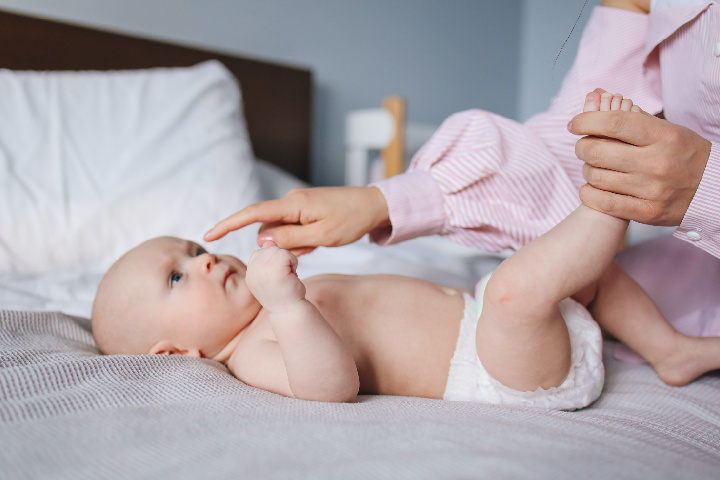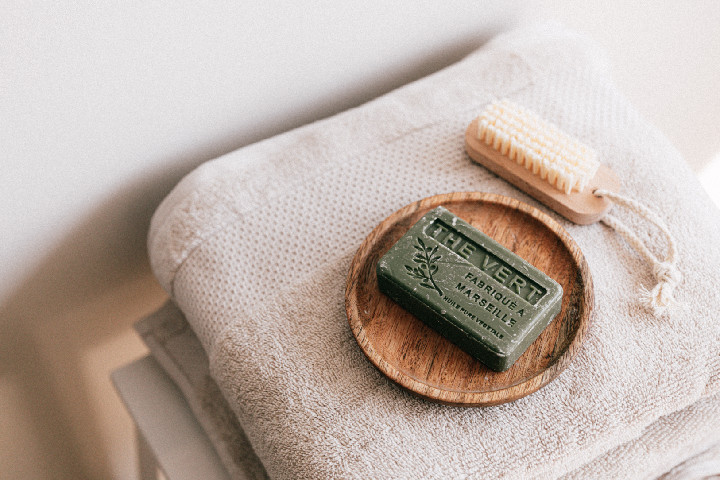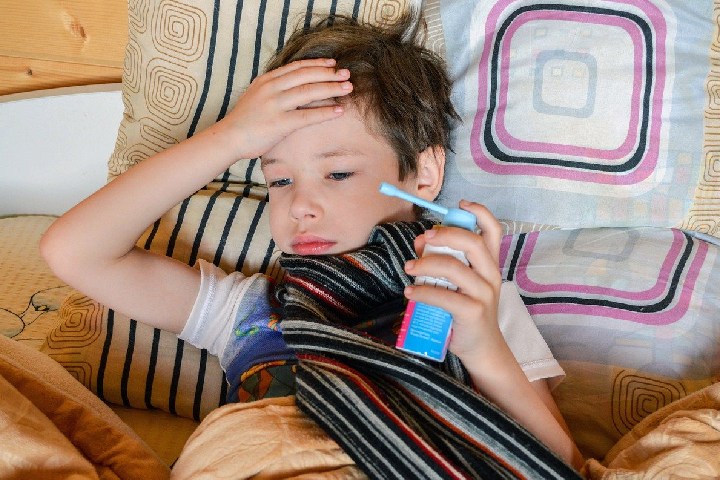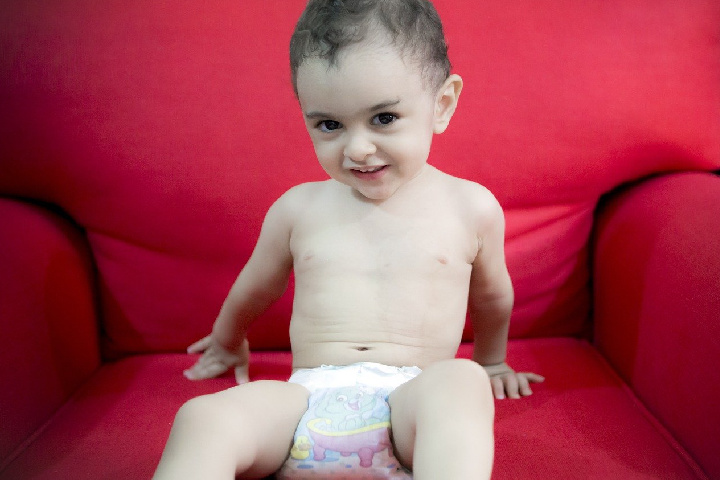Diaper Rash: It mostly affects babies and children between 6 and 12 months and does not usually cause significant problems if appropriately treated. Parents can prevent their appearance with simple measures that help keep the skin covered by the diaper dry and healthy.
The diaper use is prevalent and very practical, but it is also true that the contact of the skin that it covers with the baby’s urination and stool can end up irritating.
1. Causes of Diaper Rash
Healthy skin has an oily mantle that acts as a mechanical barrier against the outside, and that helps prevent water loss through the skin.
But suppose we keep this area of the diaper excessively humid. In that case, a microclimate is created that can end up causing maceration of the skin: it becomes too hydrated and becomes more sensitive to being damaged by friction.

This humid microclimate reduces the barrier capacity of the skin, allowing irritants to penetrate inside the skin and for microorganisms to develop more quickly.
Therefore, it is advisable to keep the diaper area dry and protected with appropriate creams, so that it remains healthy.
2. Irritation From Urine or Feces
Children’s feces contain many enzymes produced by the intestinal bacterial flora, constituting one of the major irritants for the skin, especially if the barrier function is altered.
Urea enzymes transform urine urea into ammonia, producing an increase in pH, which further favors irritation from other substances present in fecal matter.
Some studies show that children who are exclusively breastfed have fewer urease-producing bacteria in their intestines. The pH of the stool is lower, leading to a lower frequency of diaper rash.
Children’s feces contain enzymes of the bacterial flora that are irritating to the skin.
On the other hand, the newborn can urinate physiologically more than 20 times a day, and later, in the infant stage (approximately up to 12 months), it can be reduced up to 7 times a day.
Ammonia produced by urine does not act as an initial irritant, but if it accumulates on inflamed and diaper-covered skin, it worsens injuries and helps perpetuate the problem.
3. Factors That Aggravate Dermatitis
There are other factors that, although less important than the previous ones, can aggravate existing dermatitis. One of them is inadequate skin hygiene due to the use of highly irritating soaps, or even an excess of cleaning that damages the skin’s protective barrier.

The wipes may contain compounds that irritate the baby’s delicate skin, and more, if you already have hurt. Therefore, although they are efficient, it is advisable to use them only when we are out and at home and wash them with a sponge and water.
Too much cleaning can damage the skin’s protective barrier.
Another dangerous type is bacteria, which can penetrate the altered skin barrier and cause infections that complicate the process.
A prevalent kind of fungus present in children’s feces (Candida albinos), it can invade macerated or inflamed skin and increase the severity of dermatitis.
Previous treatment with oral antibiotics can cause an imbalance in the intestinal bacterial flora, promoting excessive growth of this fungus in the stool.
Likewise, the lesions can worsen with diarrhea by increasing the amount of liquid in the stools and the internal rhythm, eliminating a higher amount of enzymes and microorganisms in the seat, and some alterations of the urinary system persistent urine output.
4. Effective Prevention Measures From Diaper Rash
The most important thing is to prevent dermatitis by performing and maintaining good hygiene in the area, which should remain dry and clean, using absorbent diapers and changing them frequently.
Wet wipes may contain irritating compounds; it is better to use a sponge soaked in water.
Water (lukewarm) and soap (acidic or neutral) should only be used when bathing. Perfumes should be avoided, and we must dry the area well with gentle touches, without rubbing the skin with the towel.
With each diaper change, it is advisable to use a skin protection product, such as laser paste or similar creams. But they should not be applied in excessive quantity.
To reduce friction, the diaper should be as comfortable as possible and should be avoided too tightly.
The disposable diapers ultra-absorbent, breathable, and non – occlusive contain a gel within the cellulose core, which can absorb its weight in urine several times at the ability to reduce the high pH zone.
If cloth diapers are used, they must be rinsed several times after each wash to remove any remaining soap or detergent that could irritate the skin.
If the skin is irritated it is better to leave the baby without diapers for a few hours a day
If the skin is irritated or if the baby suffers from repeated episodes of dermatitis, it is advisable to let the baby rest without diapers for several hours a day to dry and “ventilate” the affected area.
In any case, it is advisable to avoid the preventive use of medications such as corticosteroids, antibiotics, and topical antifungals, due to the risk of allergies; They can only be used under the prescription of the pediatrician.
5. If They Appear Pimples, Blisters or Sores
The improvement of dermatitis has to arrive in about 2 or 3 days after applying the indicated prevention and treatment measures. The rashes and characteristic redness should disappear.

But if not, if they last beyond the fourth day, either the rash spreads to other areas or pimples, blisters, sores appear, and if it is accompanied by fever, it is advisable to consult a pediatrician, so that he can evaluate the evolution of the baby or child.
Possible Complications From Diaper Rash
The diaper area can be affected by other diseases in addition to diaper rashes, such as psoriasis or atopic dermatitis. In those cases, the doctor’s exam helps to differentiate them.
Sometimes the pediatrician may prescribe topical corticosteroid treatments that decrease or eliminate inflammation, antifungals if yeast is present, and topical antibiotics if there is a proven bacterial infection.
Possible complications are usually due to infections or the use of inappropriate medications for their treatment. For example, high-potency topical corticosteroids can cause infantile gluteal granuloma, with purplish-red or purplish-red nodules up to 2-3 cm in diameter.
And sometimes, when dermatitis subsides, there may be a discoloration of the skin, and even a scar in the area.
Can Help You
Changing the diaper frequently prevents moisture from persisting. Still, it is unnecessary to clean the baby with soap, this is only for when we bathe him, and we must avoid cloths and wipes soaked with alcohol, perfumes, and talcum powder.
If cloth diapers are used, wash them with mild soap, rinse thoroughly, and avoid using softeners that may be irritating.

